2.1: Molecules to Metabolism
1/30
There's no tags or description
Looks like no tags are added yet.
Name | Mastery | Learn | Test | Matching | Spaced |
|---|
No study sessions yet.
31 Terms
Recognize common functional groups: AMINE.
Understanding: Molecular biology explains living processes in terms of the chemical substances involved.
A nitrogen atom bonded to two hydrogen atoms (-NH2)
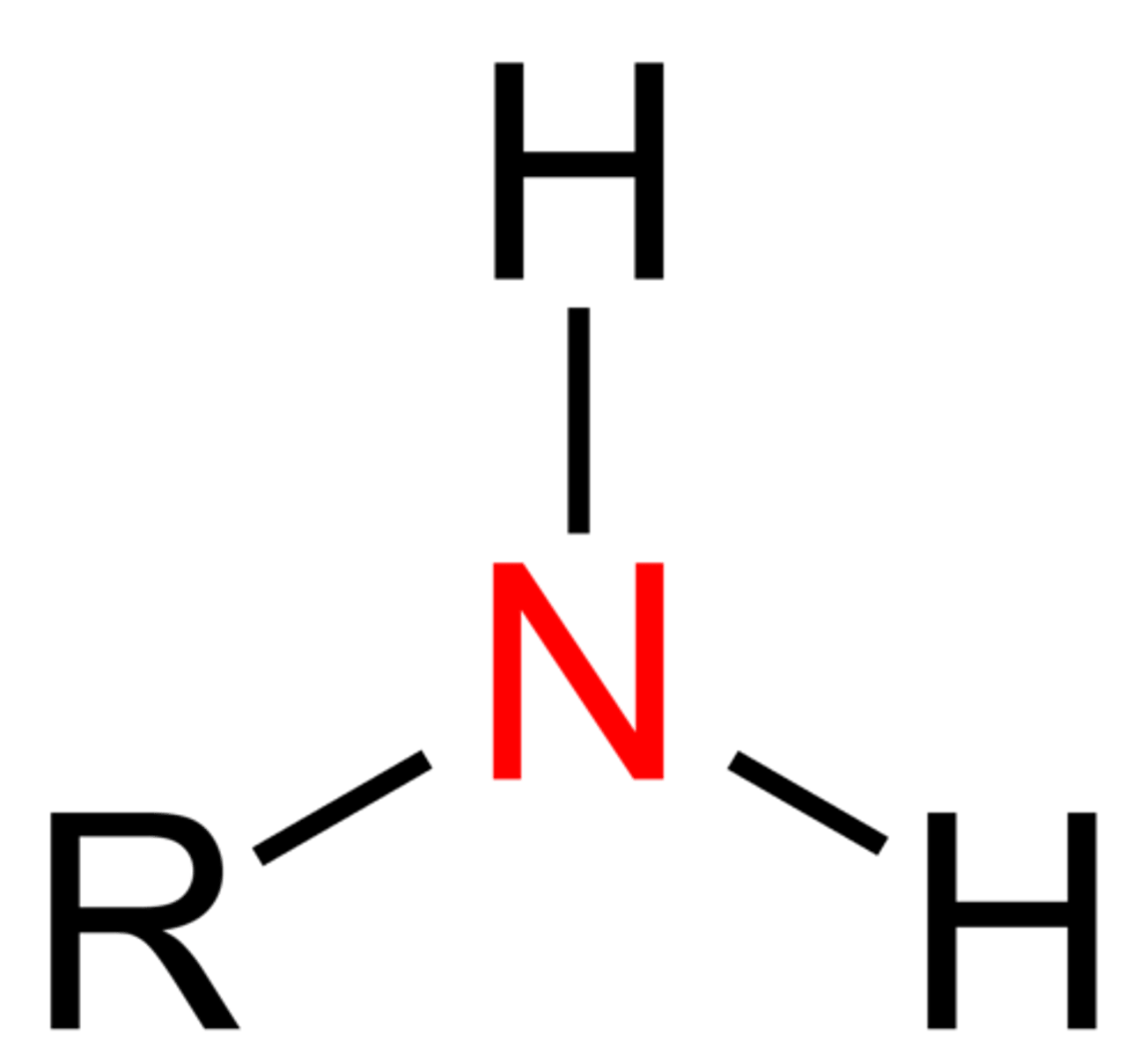
Recognize common functional groups: CARBOXYL.
Understanding: Molecular biology explains living processes in terms of the chemical substances involved.
A carbon double bonded to an oxygen (=O) and a hydroxyl (-OH)
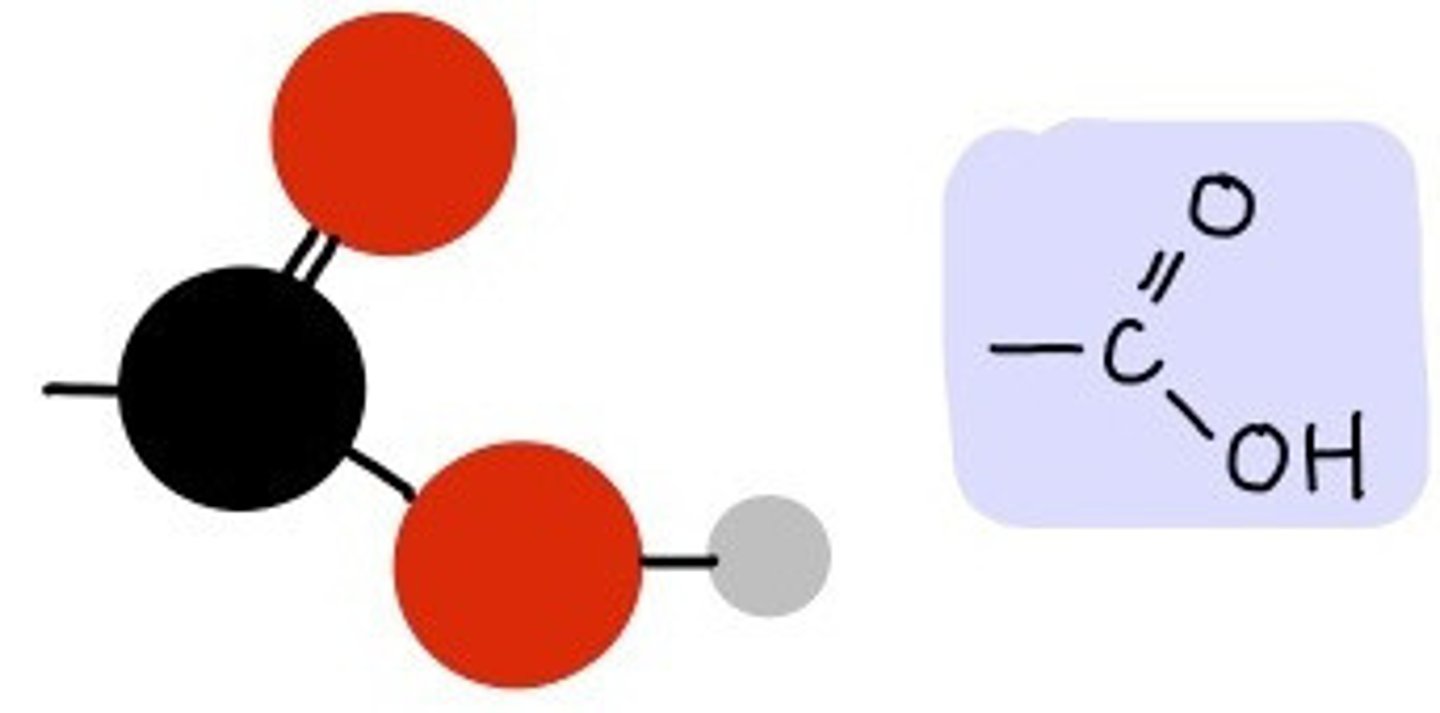
Recognize common functional groups: HYDROXYL.
Understanding: Molecular biology explains living processes in terms of the chemical substances involved.
Polar covalent bond between an oxygen and a hydrogen (-OH).
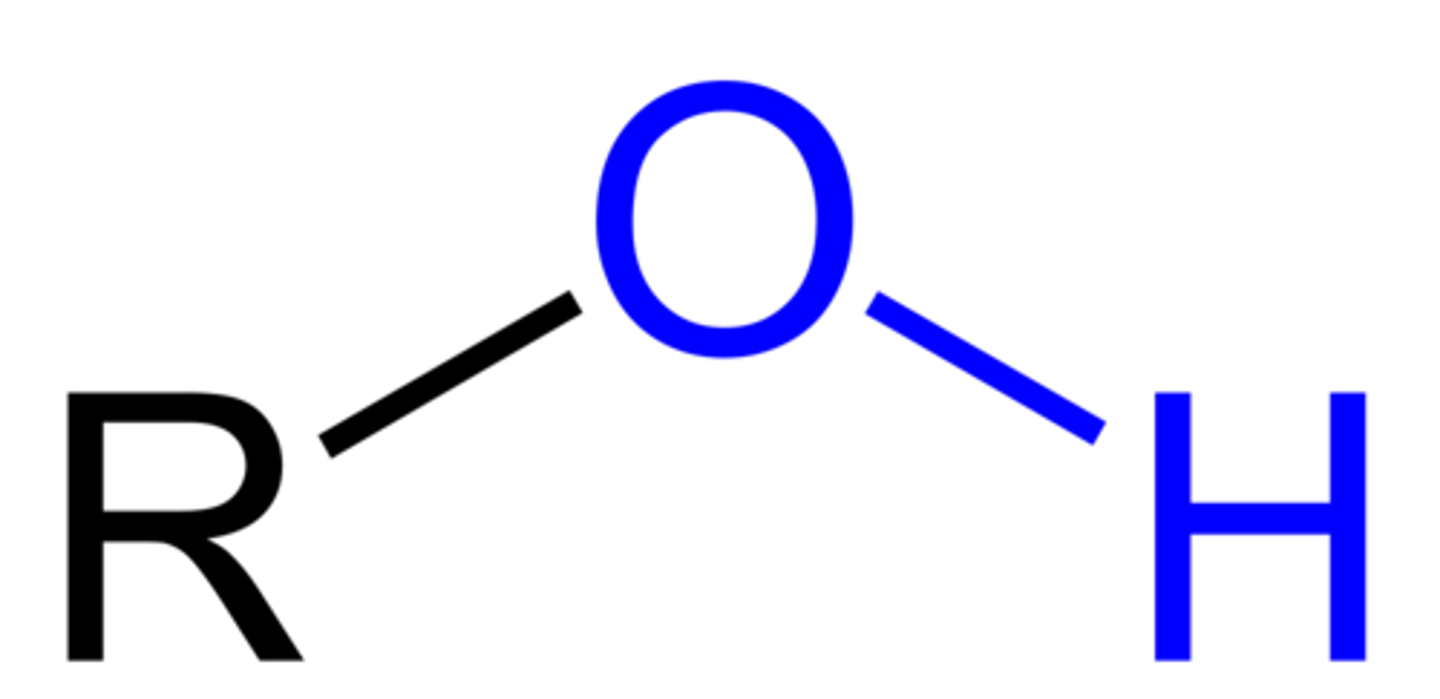
Recognize common functional groups: PHOSPHATE.
Understanding: Molecular biology explains living processes in terms of the chemical substances involved.
A central phosphorus bonded to four oxygen atoms (-PO₄). This functional group has a negative charge.
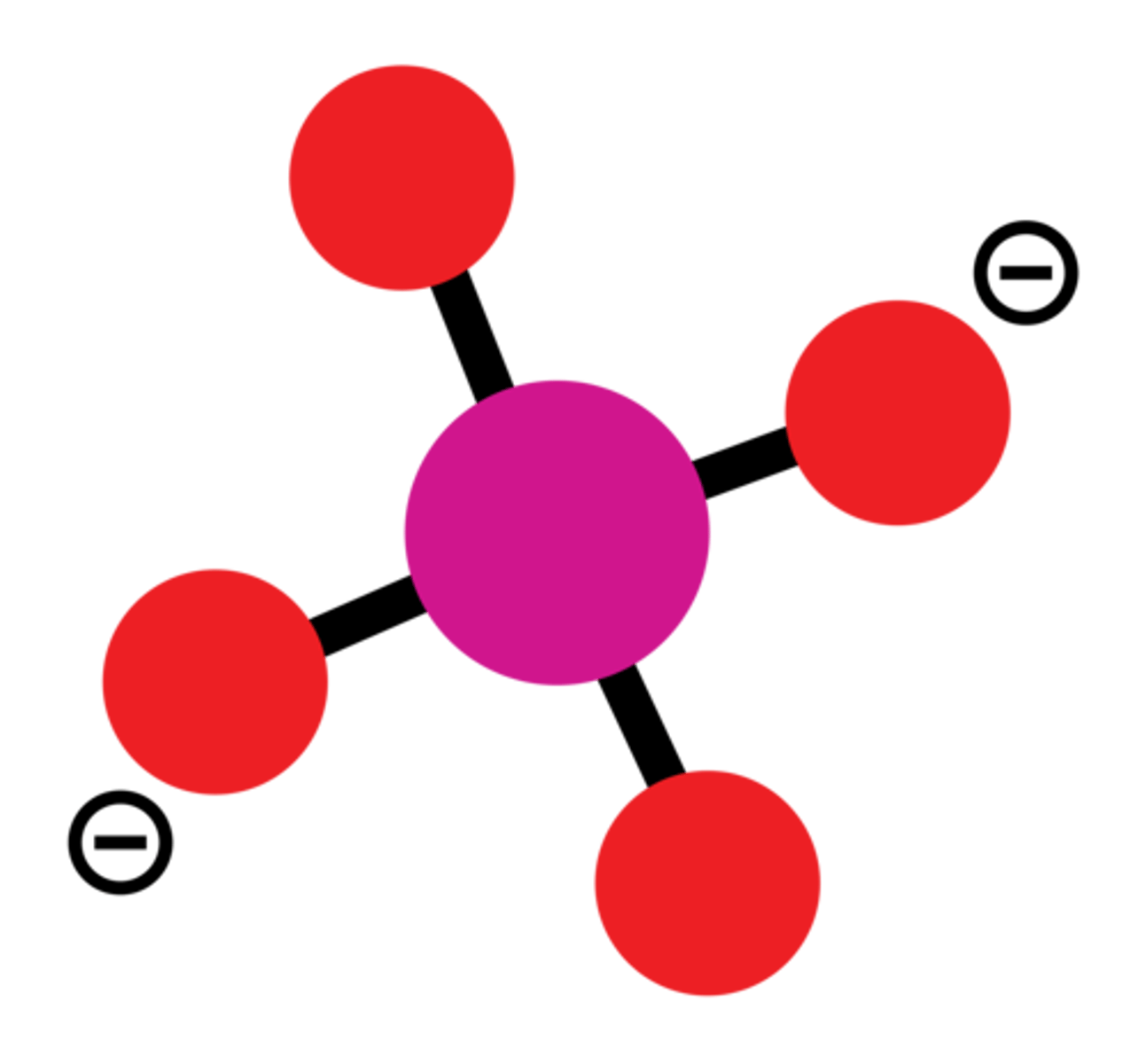
Outline the number and type of bond carbon can form with other atoms.
Understanding: Carbon atoms can form four covalent bonds allowing a diversity of stable compounds to exist.
Carbon can form four covalent bonds with other atoms.
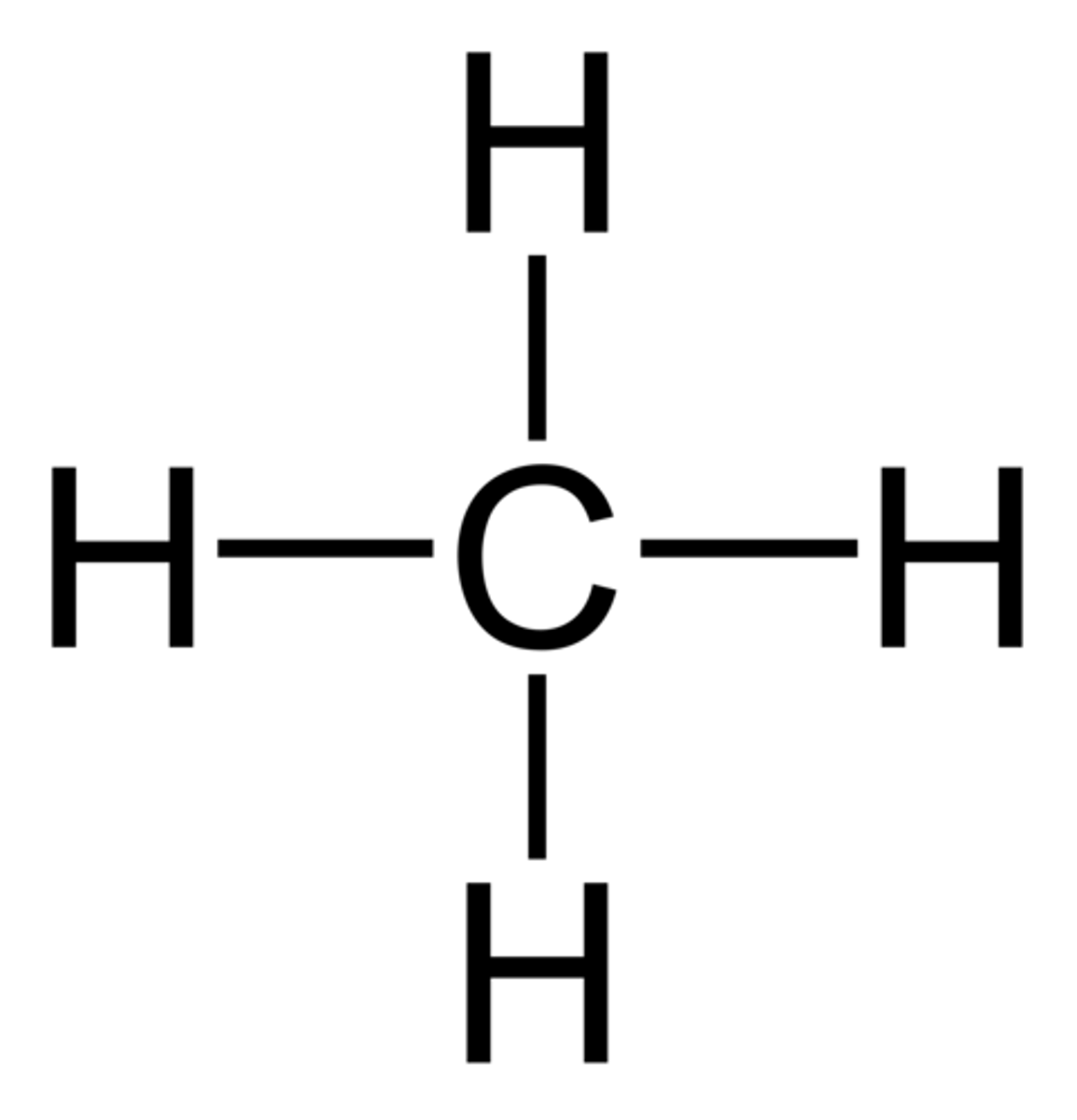
List the four major classes of carbon compounds used by living organisms.
Understanding: Life is based on carbon compounds including carbohydrates, lipids proteins and nucleic acids.
Carbohydrates
monosaccharides
disaccharides
polysaccharides
Proteins
amino acids
dipeptides
polypeptides
Lipids
fatty acids
sterols
triglycerides
phospholipids
Nucleic Acids
nucleotides
DNA
RNA
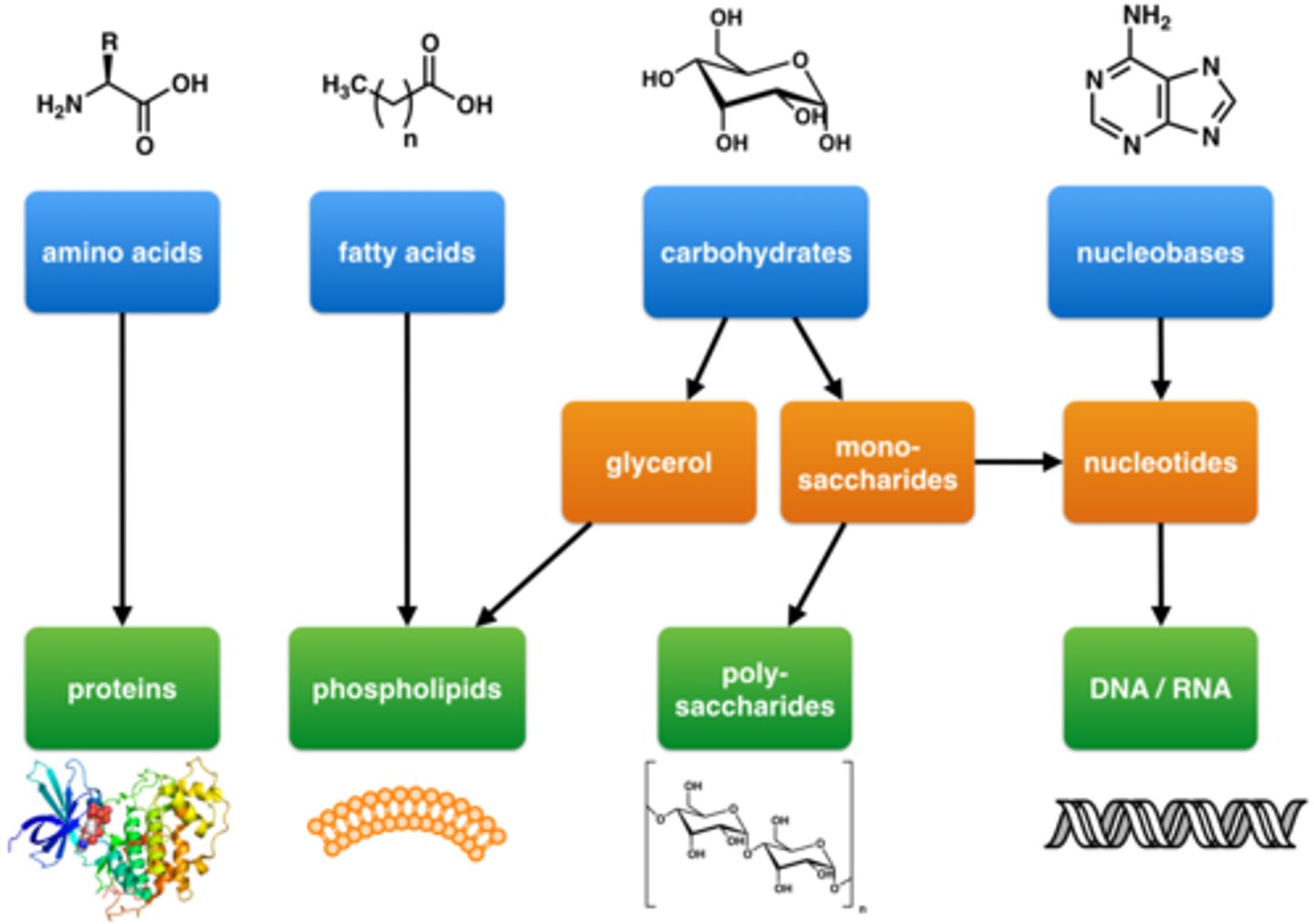
Define metabolism.
Understanding: Metabolism is the web of all the enzyme-catalyzed reactions in a cell or organism.
The chemical processes that occur within a living organism in order to maintain life.
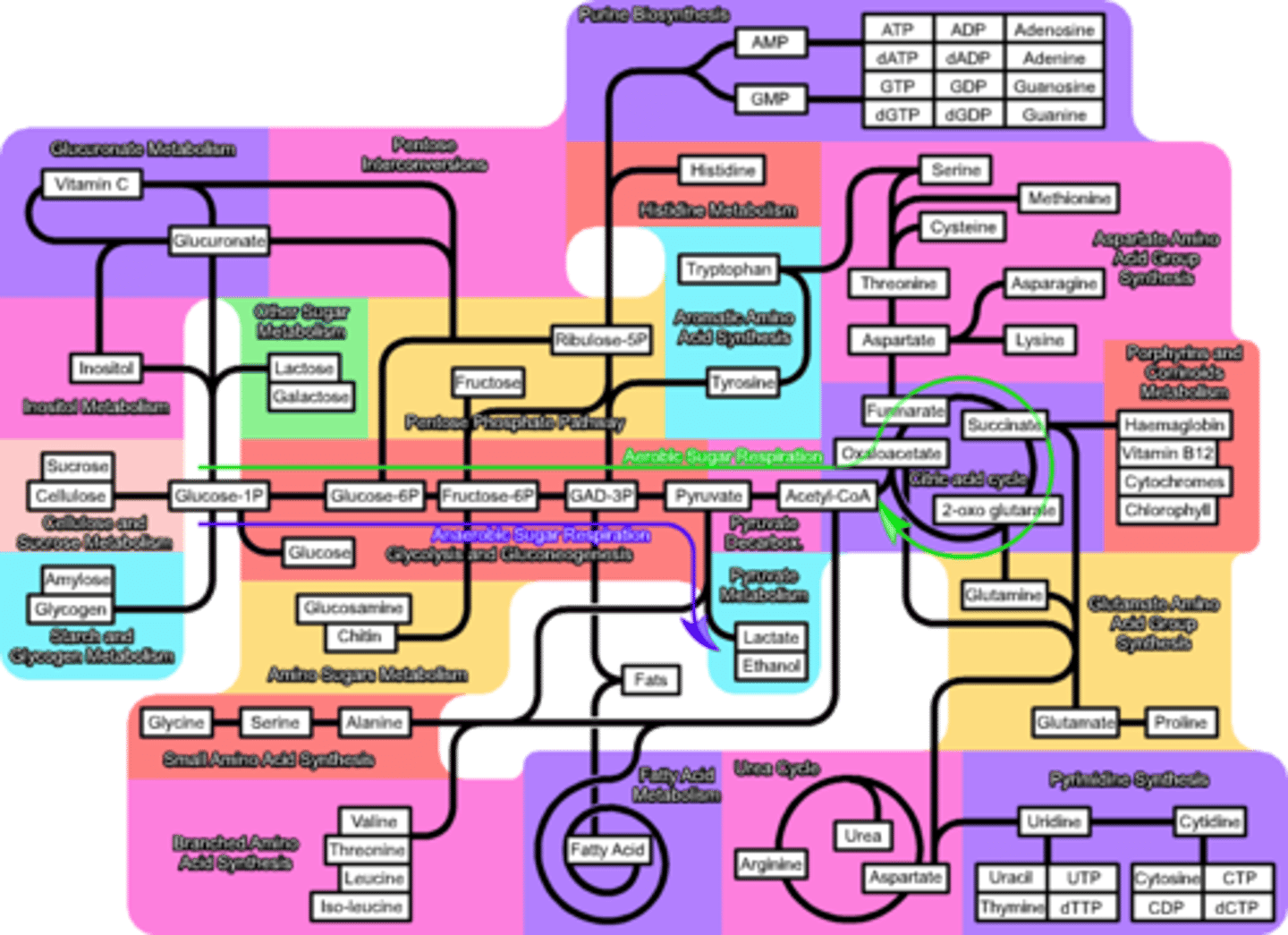
Define catalysis.
Understanding: Metabolism is the web of all the enzyme-catalyzed reactions in a cell or organism.
The increase in the rate of a chemical reaction due to the participation of an additional substance called a catalyst, which is not consumed in the catalyzed reaction and can continue to act repeatedly. Biological catalysts are called enzymes.
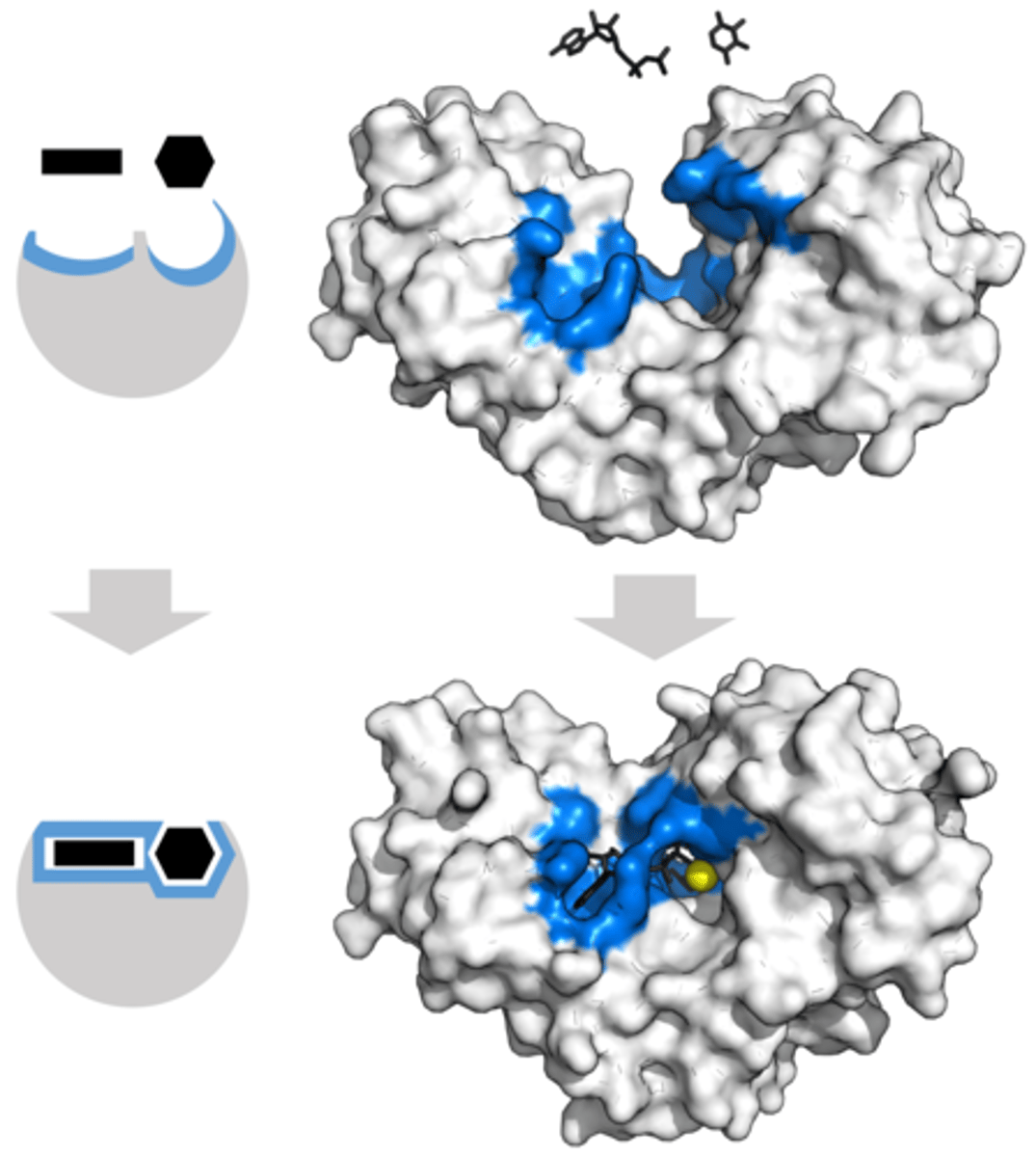
Define anabolism.
Understanding: Anabolism is the synthesis of complex molecules from simpler molecules including the formation of macromolecules from monomers by condensation reactions.
Constructing larger molecules from smaller subunits.
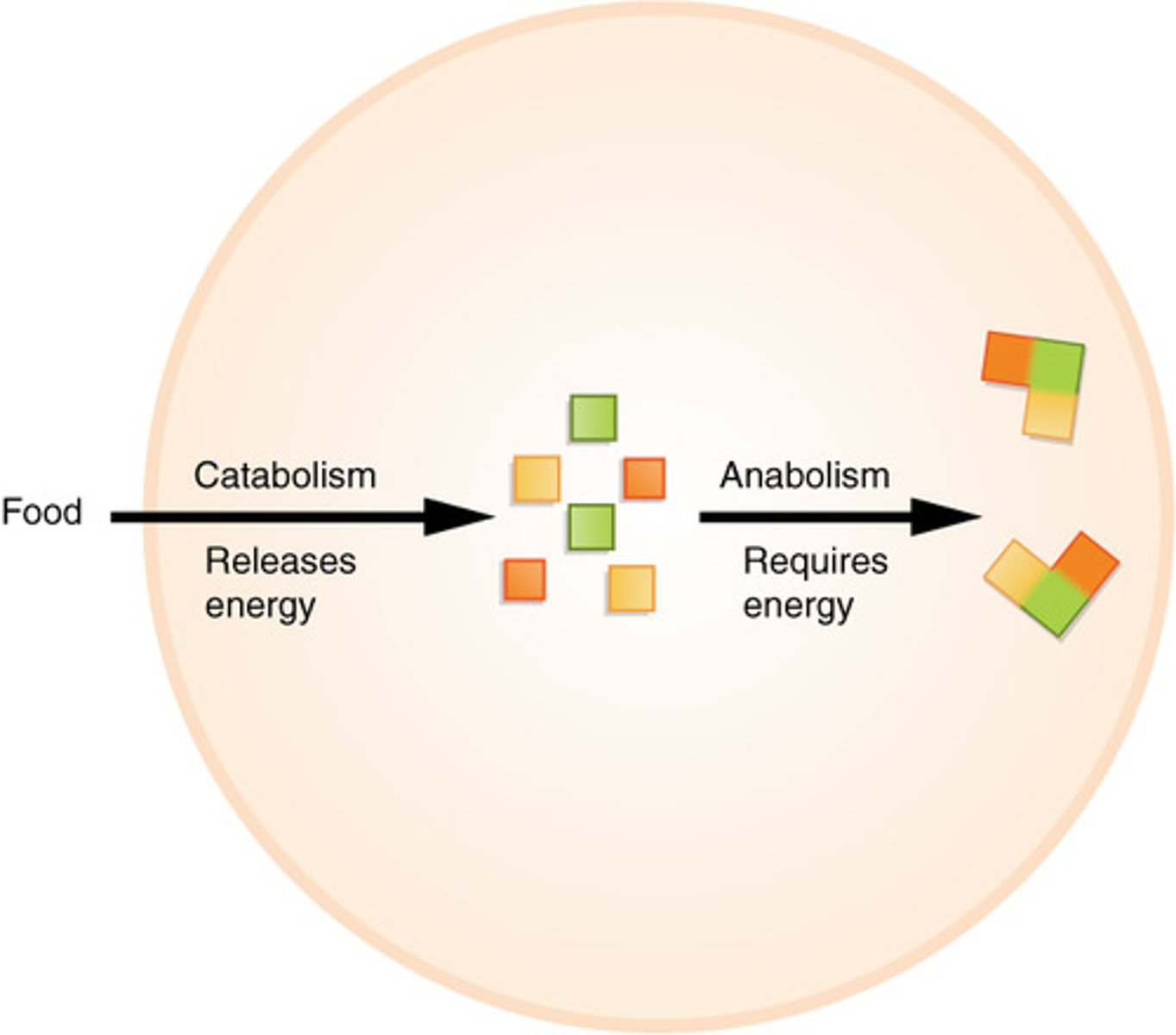
Define monomer.
Understanding: Anabolism is the synthesis of complex molecules from simpler molecules including the formation of macromolecules from monomers by condensation reactions.
A small molecule that can bind with other molecules of the same type to form a large polymer.
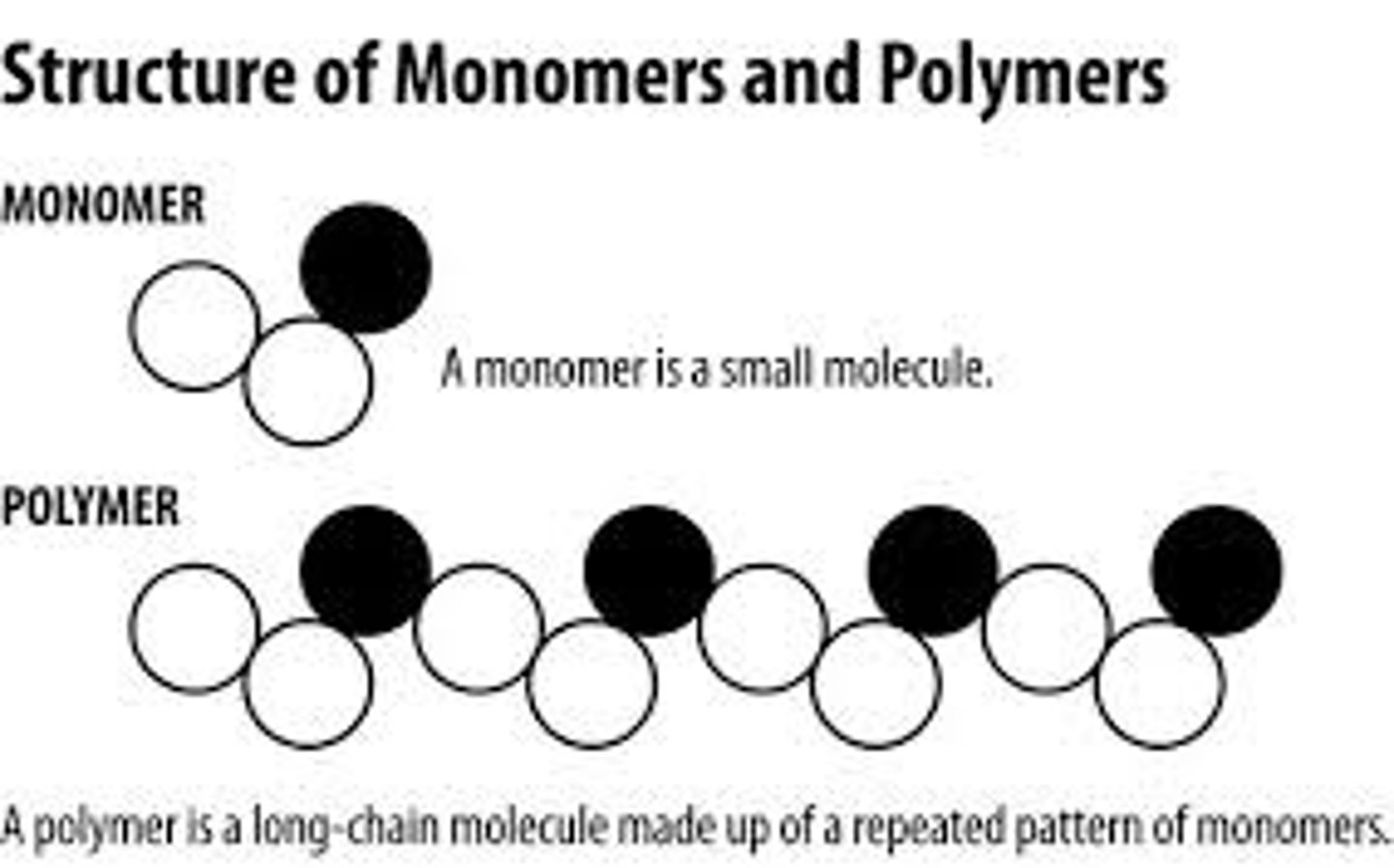
Define polymer.
Understanding: Anabolism is the synthesis of complex molecules from simpler molecules including the formation of macromolecules from monomers by condensation reactions.
A large molecule composed of many repeating monomer subunits.

Describe condensation (dehydration synthesis) reactions.
Understanding: Anabolism is the synthesis of complex molecules from simpler molecules including the formation of macromolecules from monomers by condensation reactions.
A chemical reaction in which two molecules (monomers) combine to form a larger molecule with the formation of water.
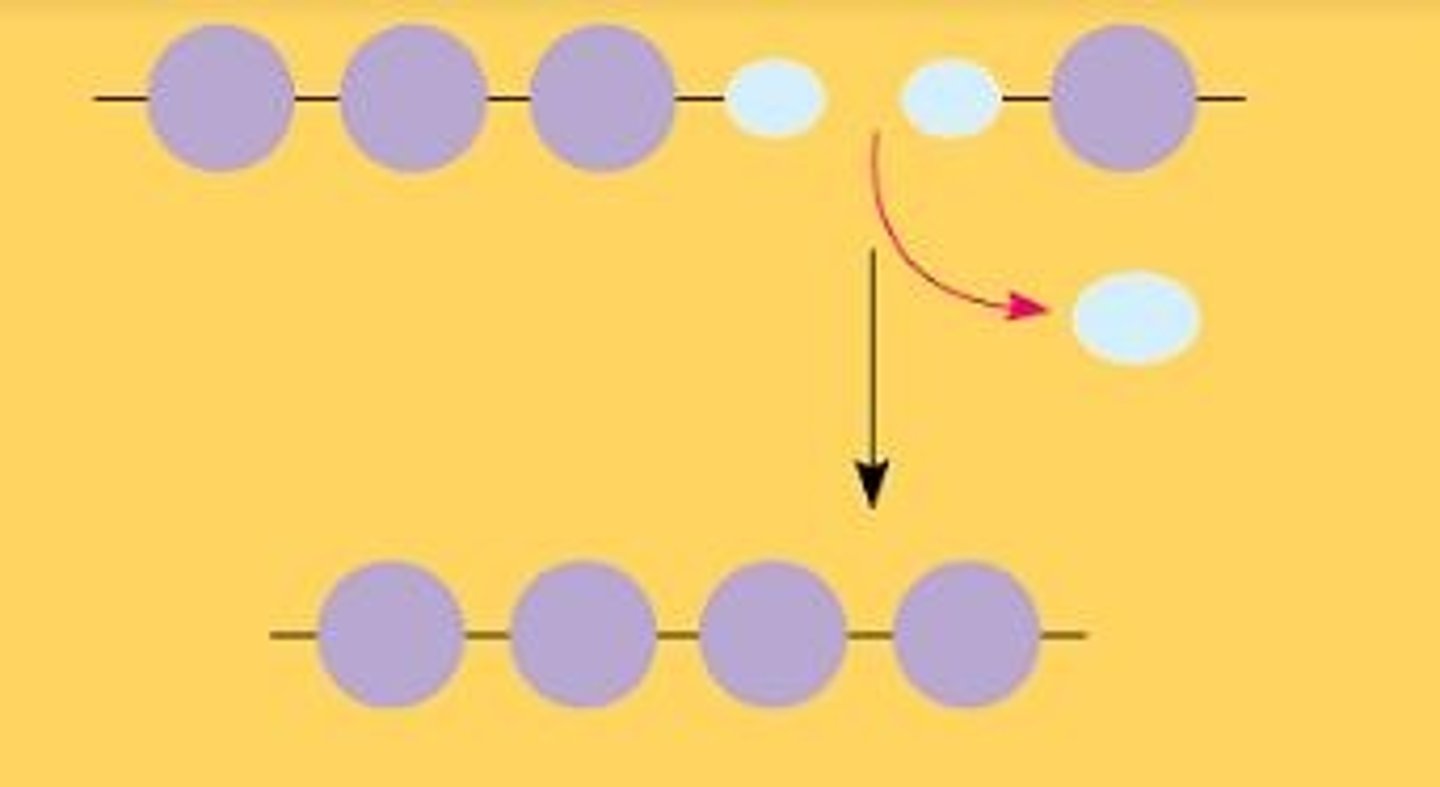
Define catabolism.
Understanding: Catabolism is the breakdown of complex molecules into simpler molecules including the hydrolysis of macromolecules into monomers.
Catabolism is the breaking down of large molecules into smaller subunits.
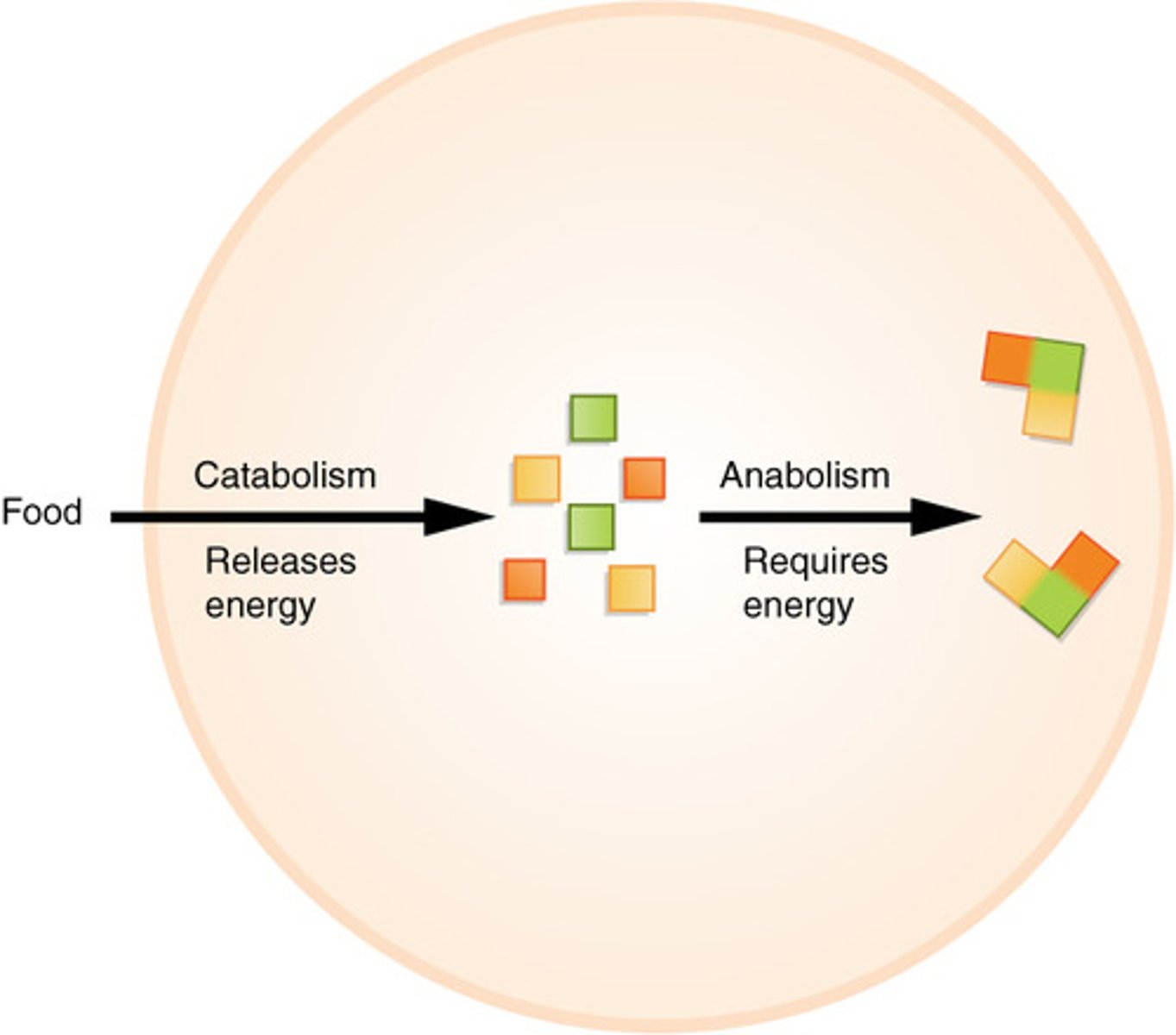
Describe hydrolysis reactions.
Understanding: Catabolism is the breakdown of complex molecules into simpler molecules including the hydrolysis of macromolecules into monomers.
A chemical reaction in which a polymer breaks apart into smaller subunits; addition of water is used to break the bonds.

Draw the molecular structure of urea.
Application: Urea as an example of a compound that is produced by living organisms but can also be artificially synthesized.
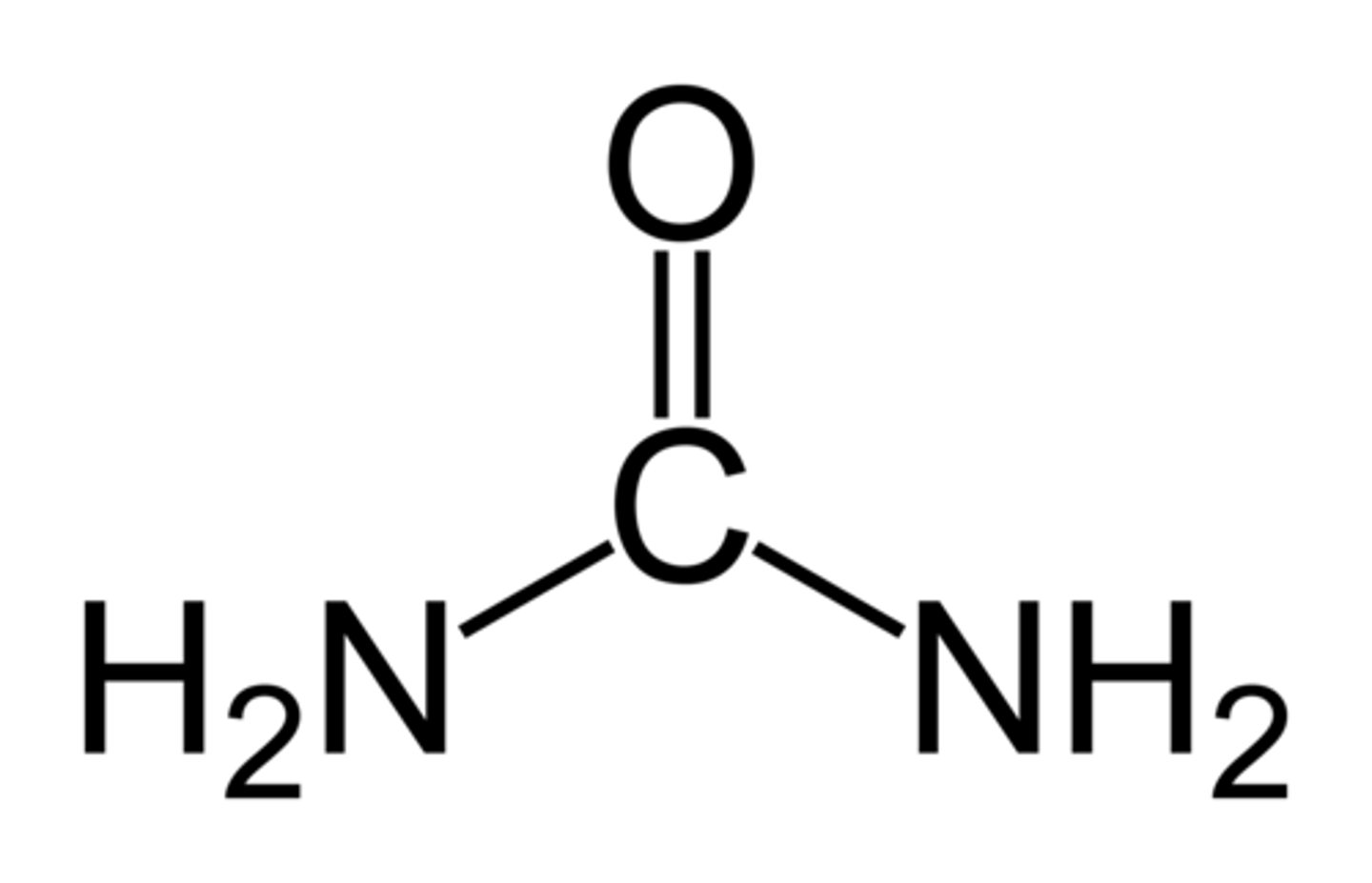
Describe how urea can be synthesized by living and artificial mechanisms.
Application: Urea as an example of a compound that is produced by living organisms but can also be artificially synthesized.
In the liver, ammonia (NH3, a toxic byproduct of protein metabolism) is converted to urea, which is excreted from the body via the kidneys.
Urea can also be synthesis artificially in a reaction between ammonia and carbon dioxide.
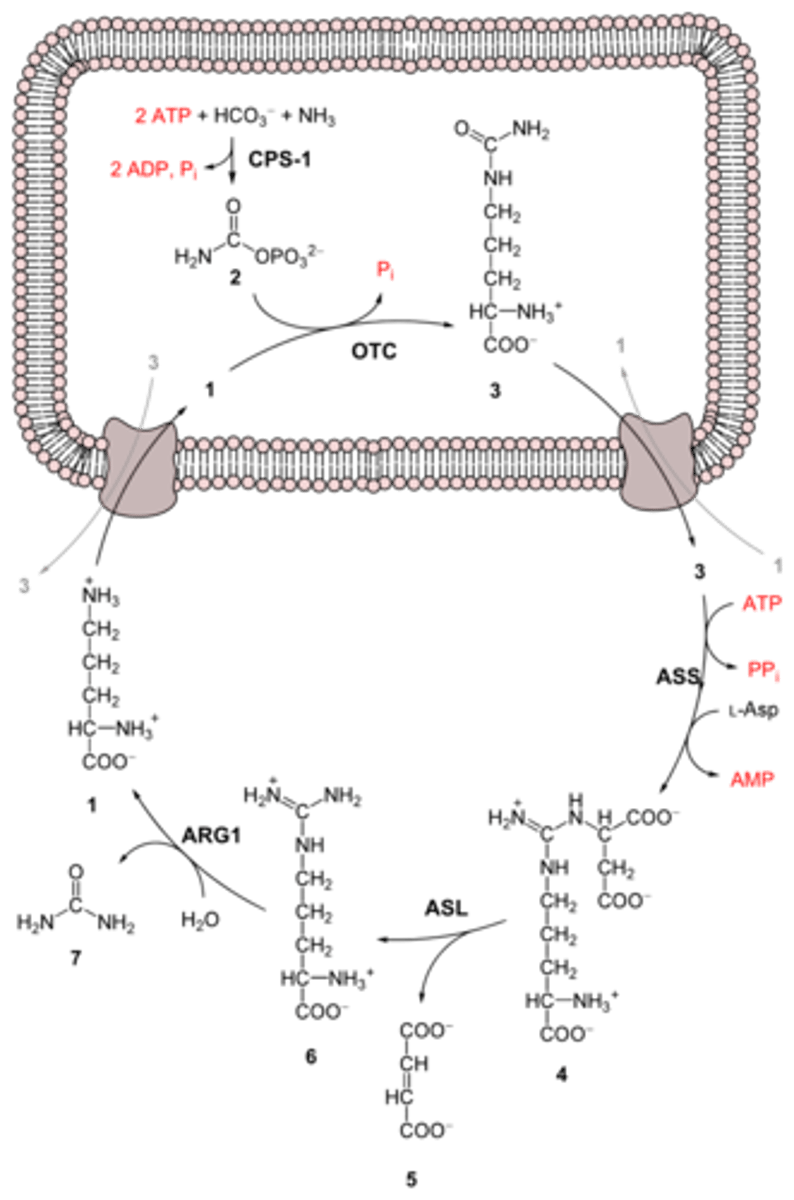
Draw the molecular diagram of ribose.
Skill: Drawing molecular diagrams of glucose, ribose, a saturated fatty acid and a generalized amino acid.
5 carbon atoms
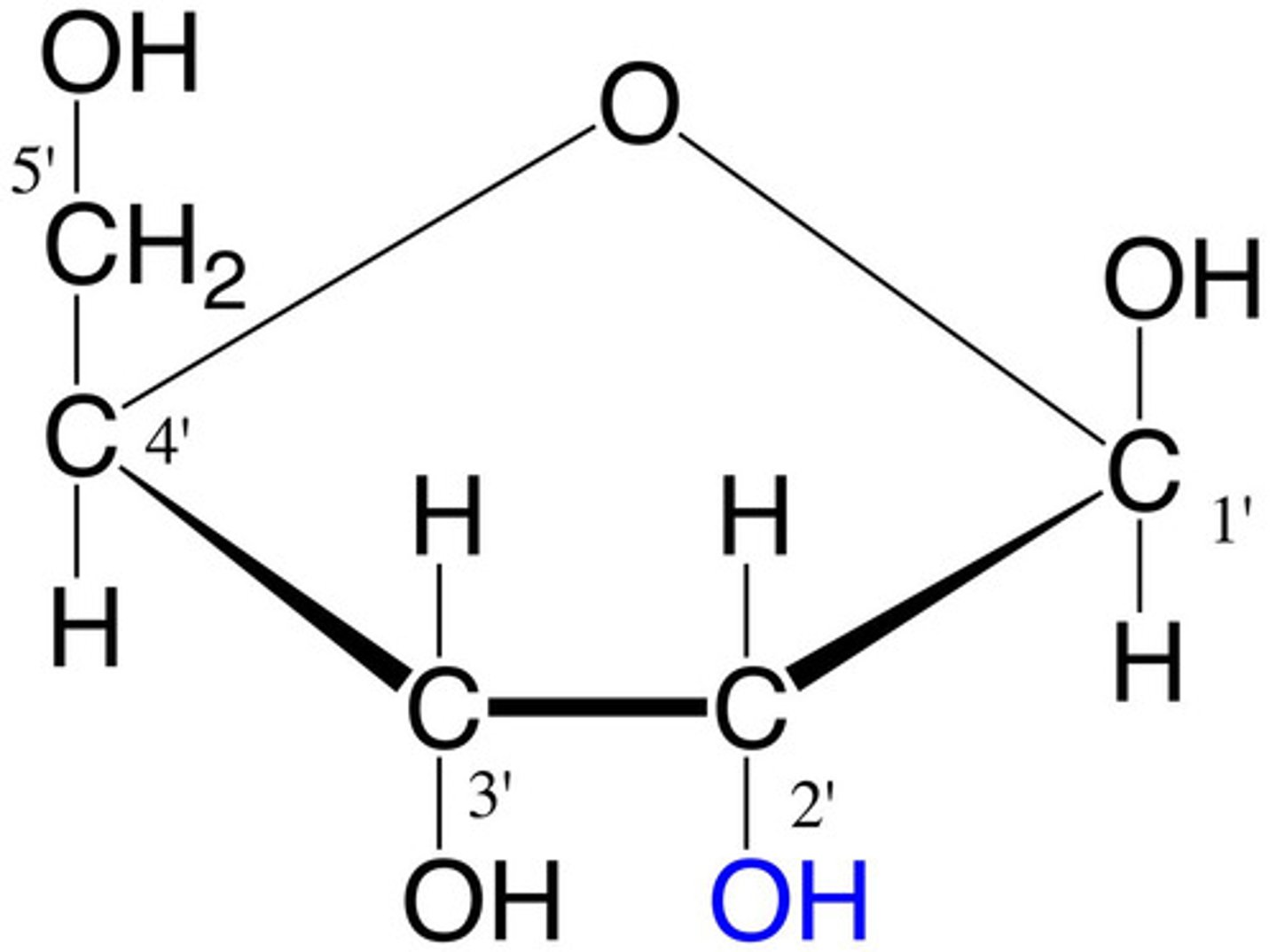
Draw the molecular diagram of alpha-glucose.
Skill: Drawing molecular diagrams of glucose, ribose, a saturated fatty acid and a generalized amino acid.
6 carbon atoms
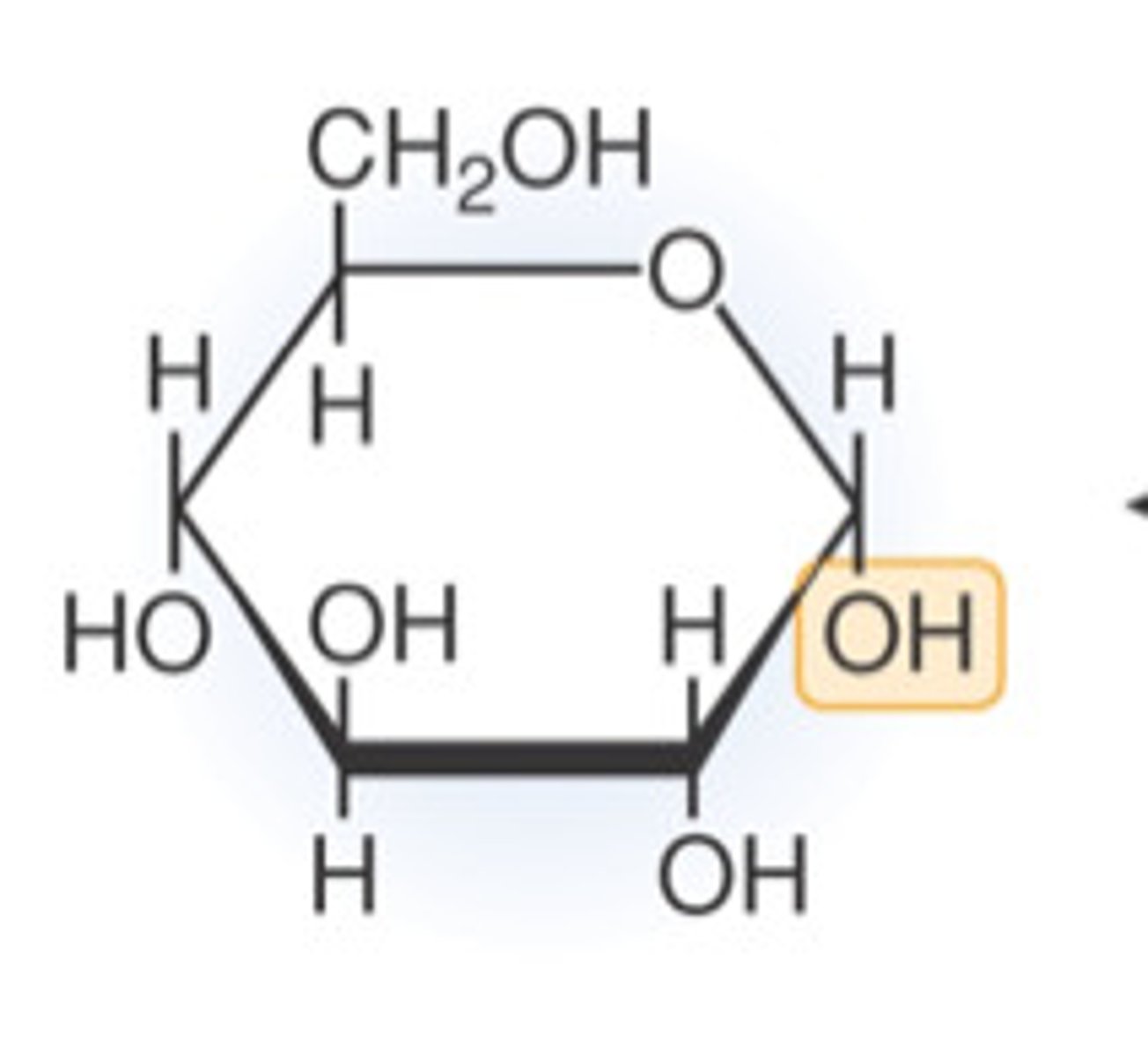
Draw the molecular diagram of a saturated fatty acid.
Skill: Drawing molecular diagrams of glucose, ribose, a saturated fatty acid and a generalized amino acid.
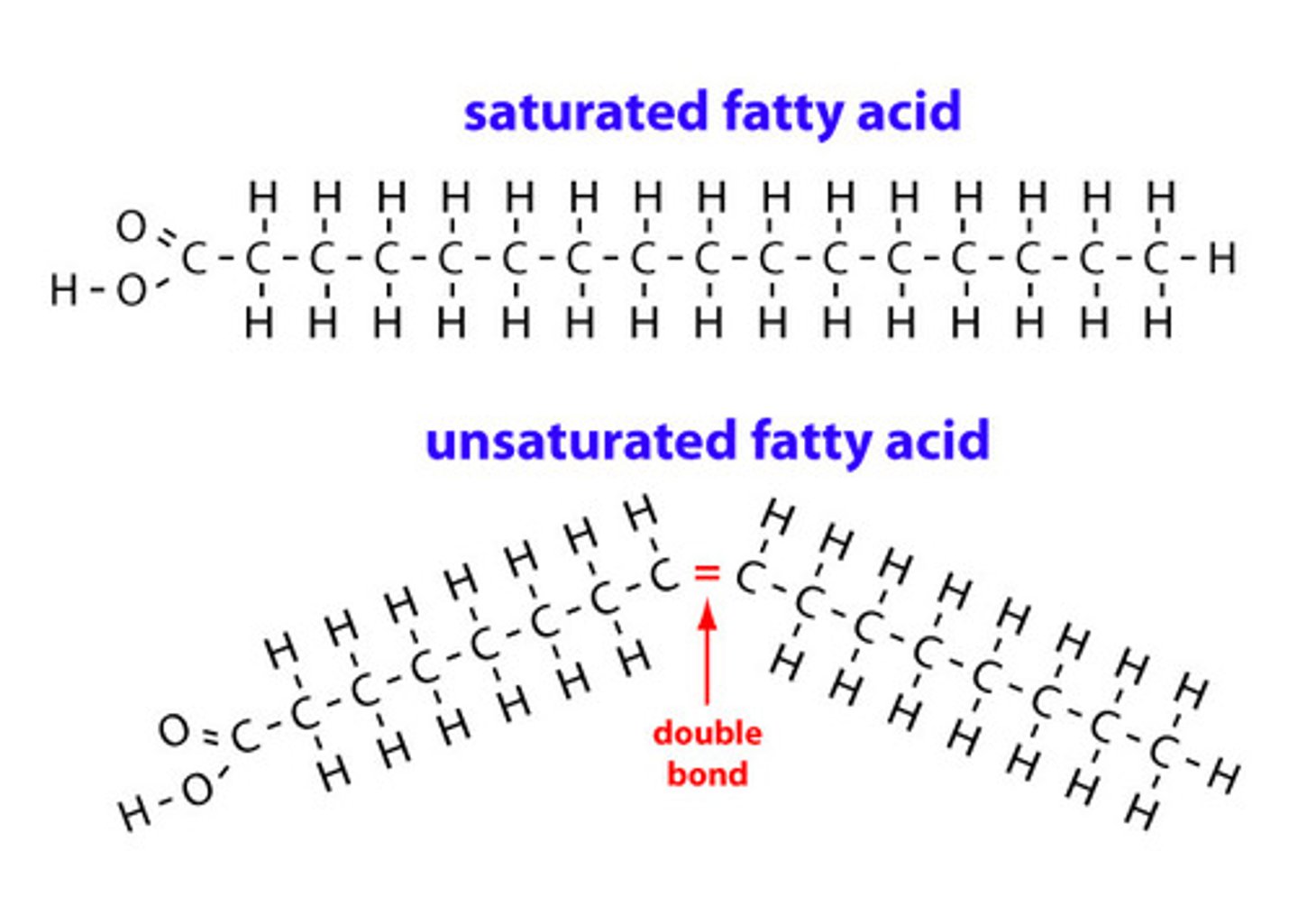
Identify the carboxyl and methyl groups on a fatty acid.
Skill: Drawing molecular diagrams of glucose, ribose, a saturated fatty acid and a generalized amino acid.
Carboxyl = COOH
Methyl = CH3
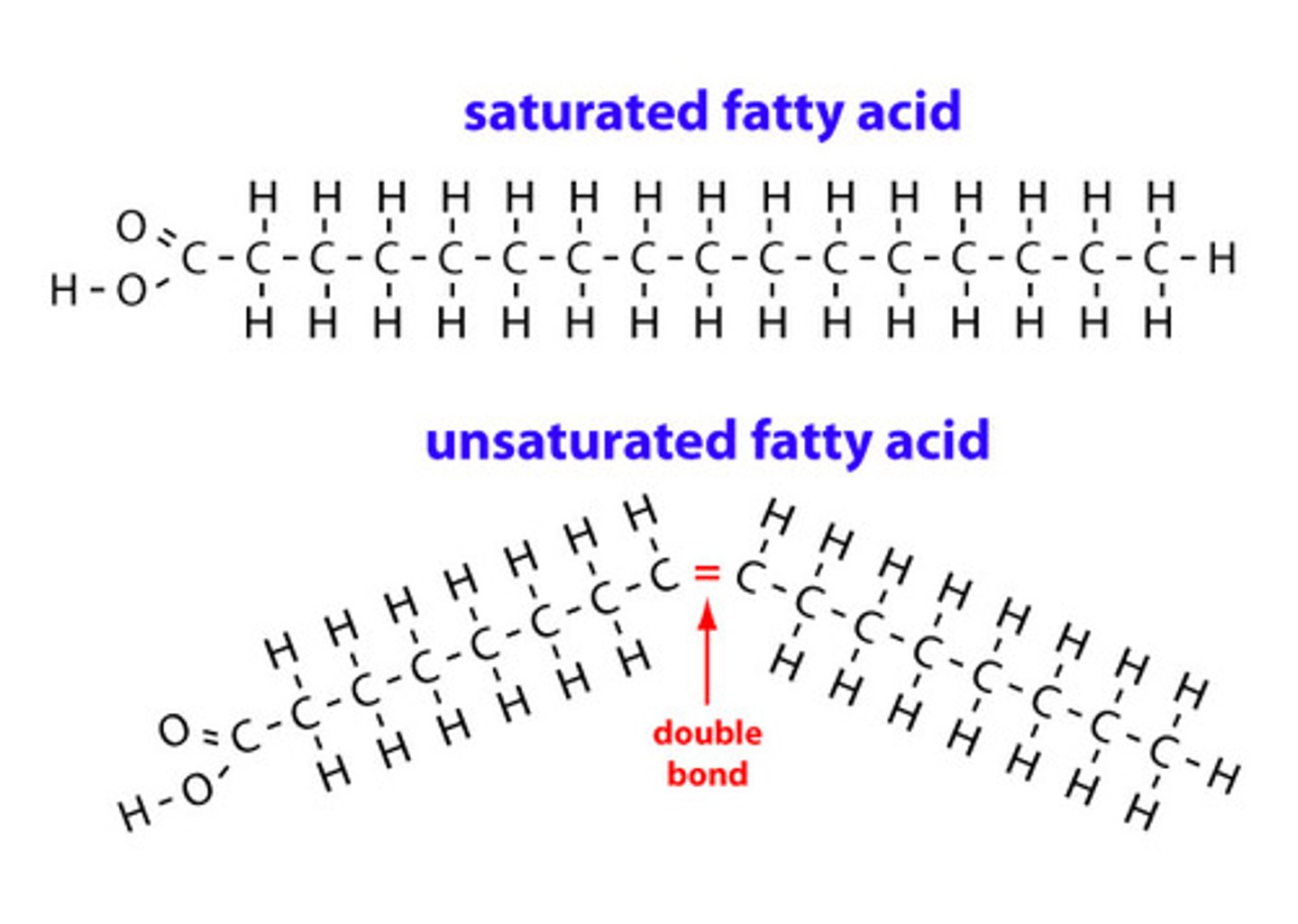
Draw the generalized structure of an amino acid.
Skill: Drawing molecular diagrams of glucose, ribose, a saturated fatty acid and a generalized amino acid.
Amine group (NH2)
Central carbon atom
Carboxyl group (COOH)
Variable group (R)
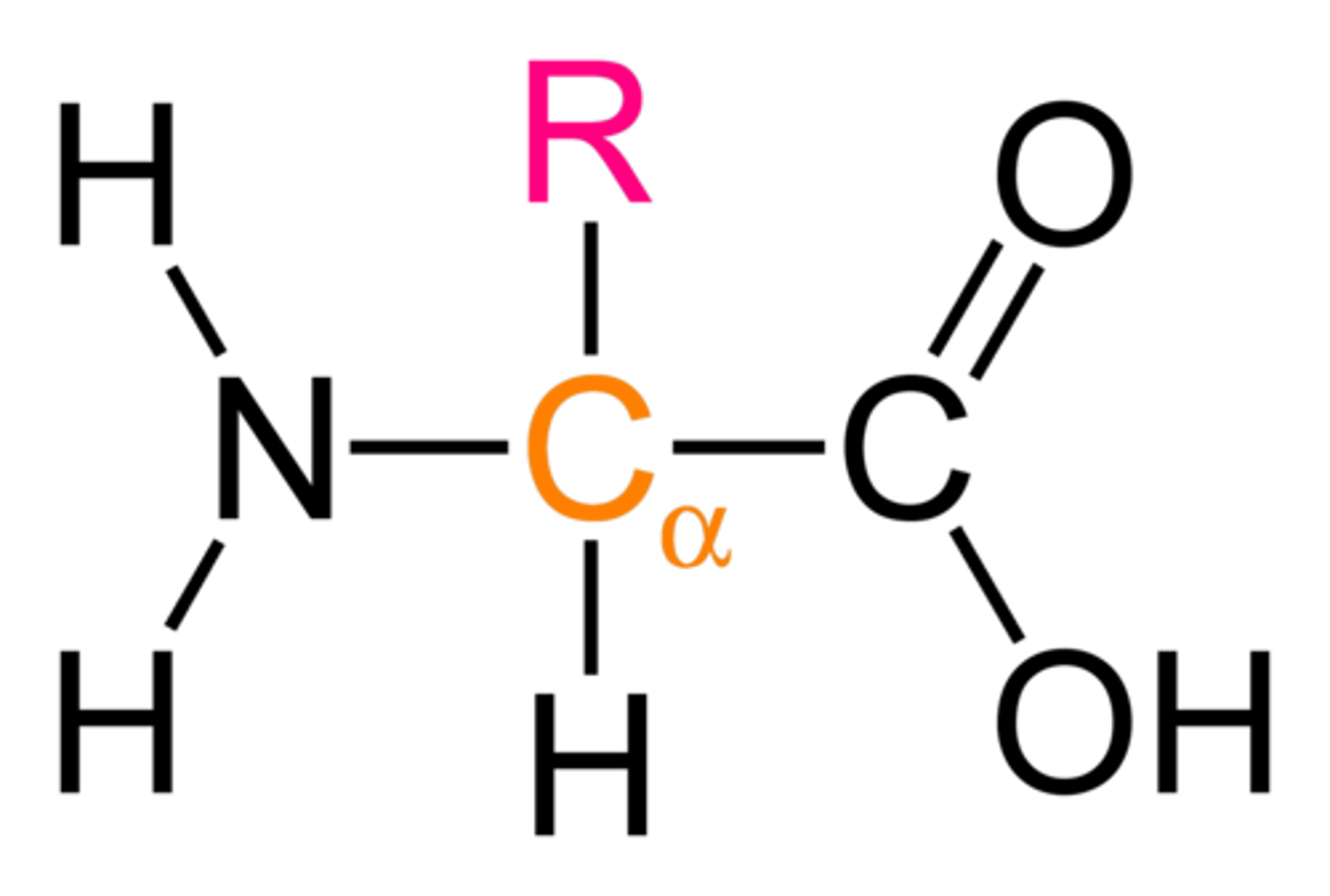
Label the amine group, carboxyl group, alpha carbon and R group on an amino acid.
Skill: Drawing molecular diagrams of glucose, ribose, a saturated fatty acid and a generalized amino acid.
Amine group (NH2)
Central carbon atom
Carboxyl group (COOH)
Variable group (R)
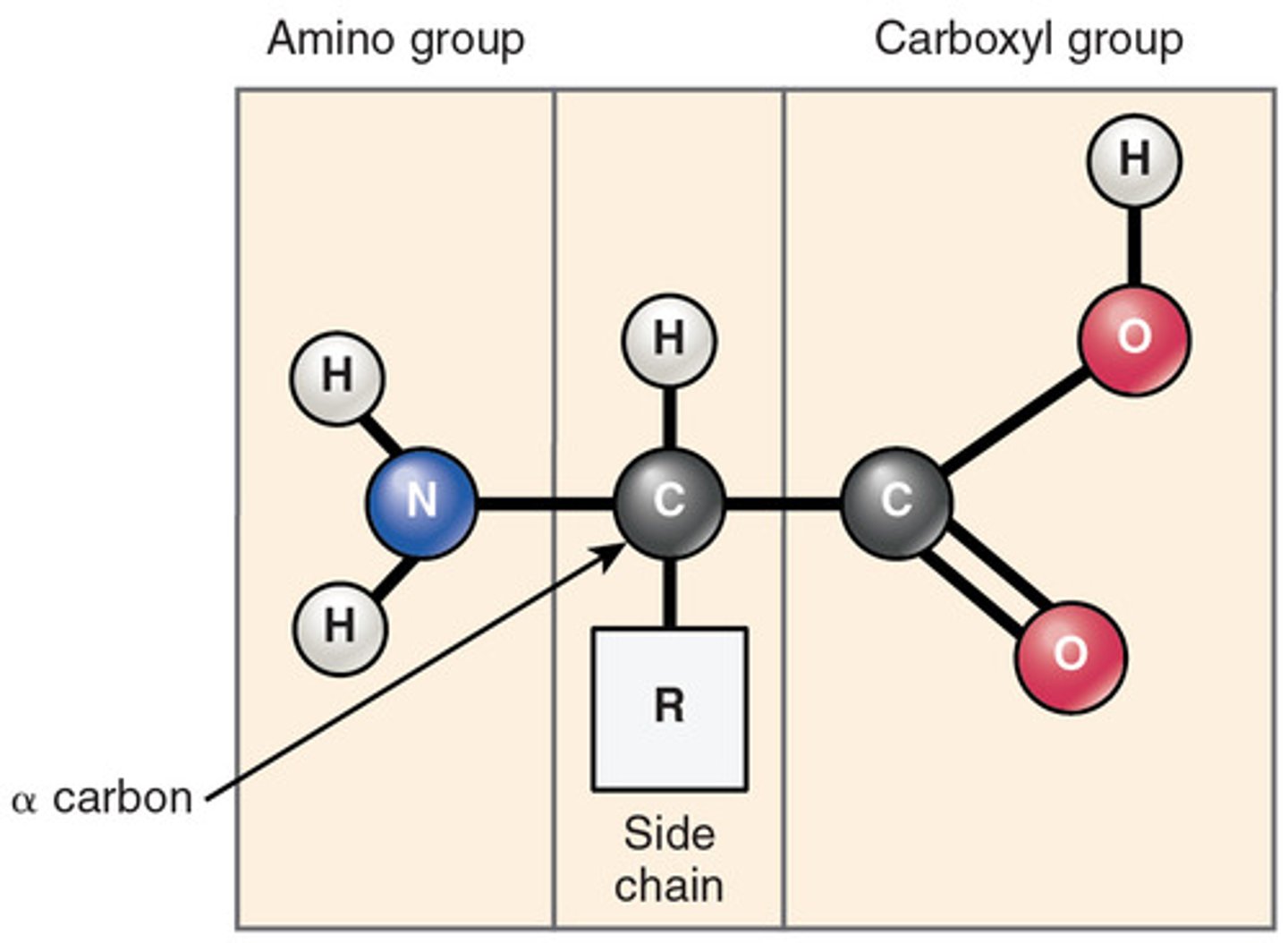
Identify a triglyceride from molecular drawings.
Skill: Identification of biochemical such as sugars, lipids, or amino acids from molecular drawings.
3 fatty acid chains
1 glycerol
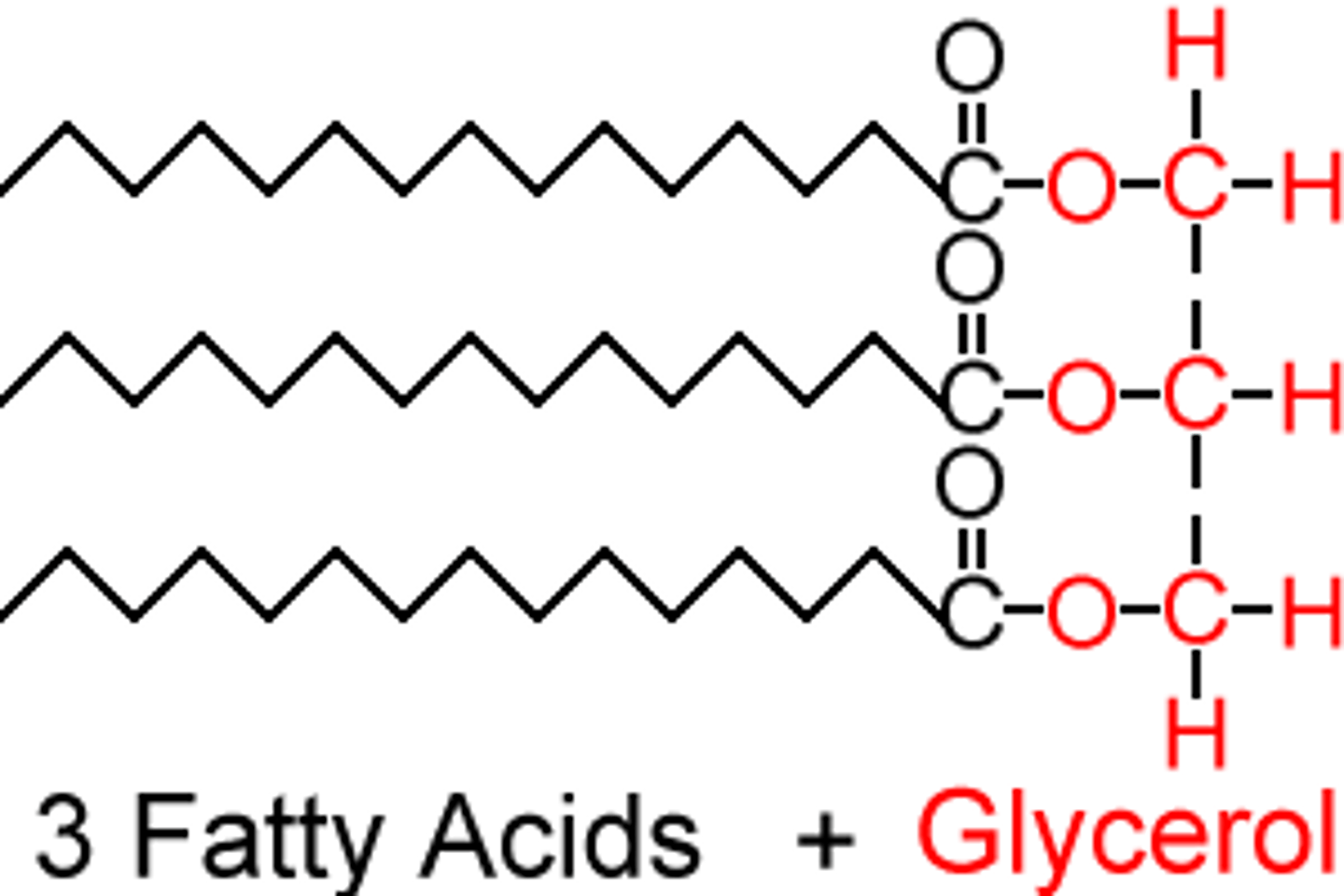
Identify a phospholipid from molecular drawings.
Skill: Identification of biochemical such as sugars, lipids, or amino acids from molecular drawings.
2 fatty acid chains
1 glycerol
1 phosphate group
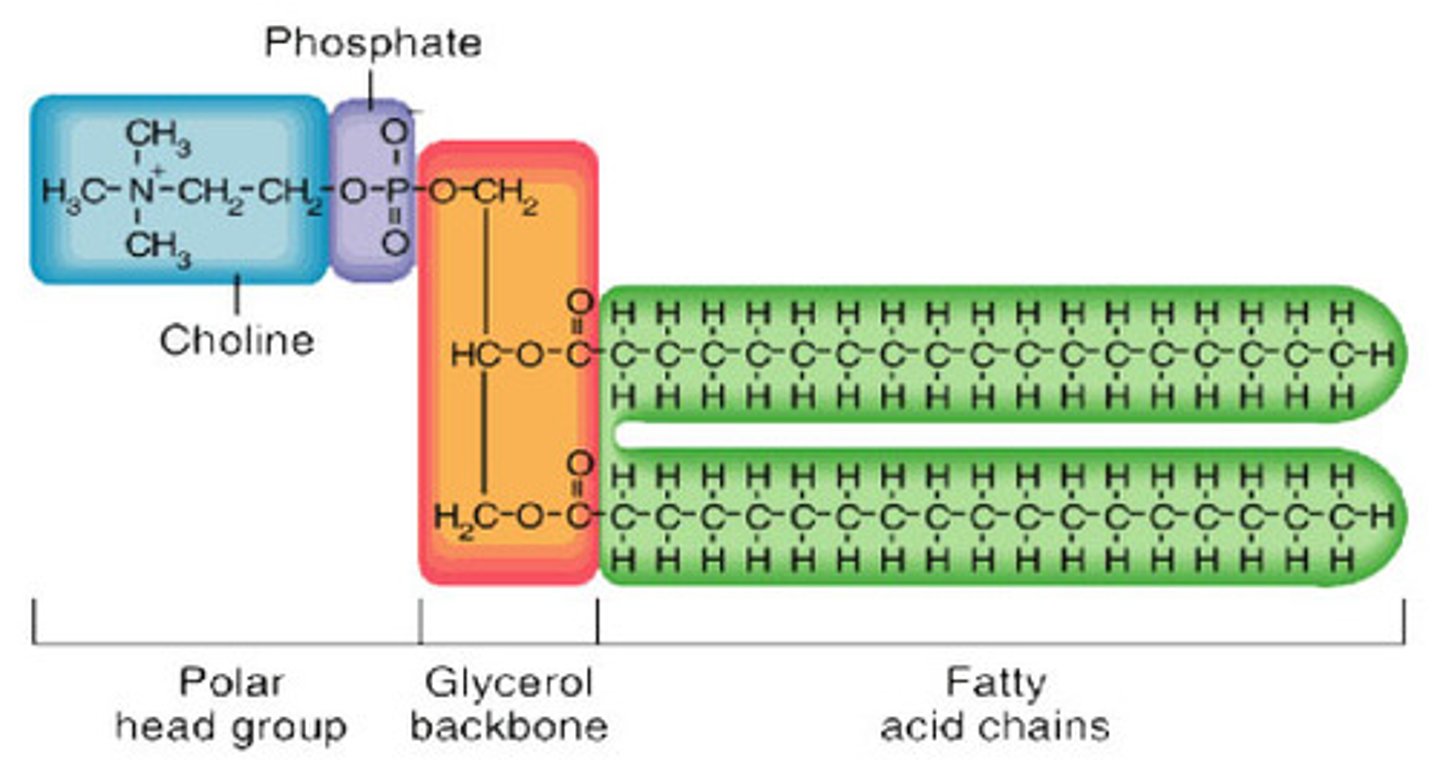
Identify a sterol from molecular drawings.
Skill: Identification of biochemical such as sugars, lipids, or amino acids from molecular drawings.
4 carbon based rings

Identify cellulose from molecular drawings.
Skill: Identification of biochemical such as sugars, lipids, or amino acids from molecular drawings.
Polymer of beta-glucose with bonds between carbons 1 and 4 of adjacent molecules
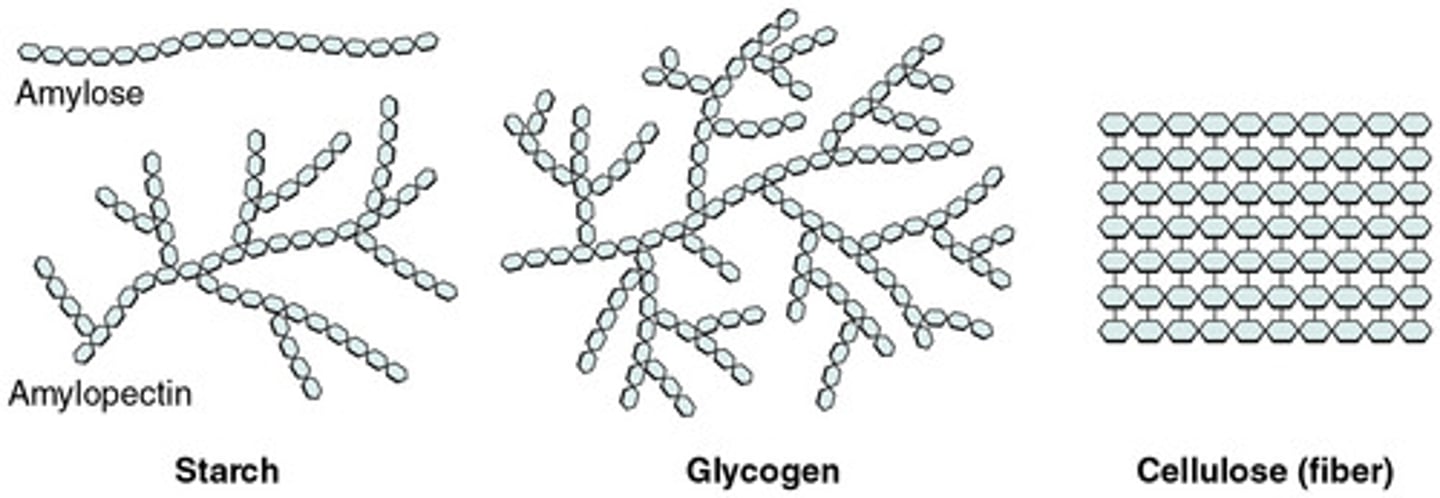
Identify glycogen from molecular drawings.
Skill: Identification of biochemical such as sugars, lipids, or amino acids from molecular drawings.
Polymer of alpha-glucose with many branch points.
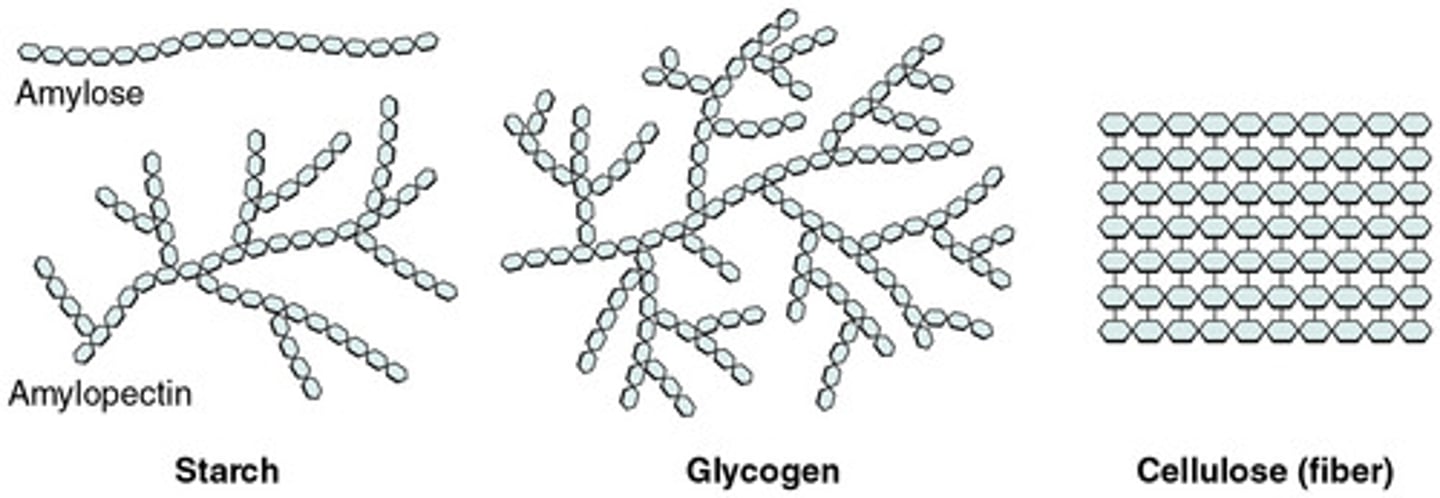
Identify amylose from molecular drawings.
Skill: Identification of biochemical such as sugars, lipids, or amino acids from molecular drawings.
Amylose starch is a polymer of apha-glucose with few or no branch points.
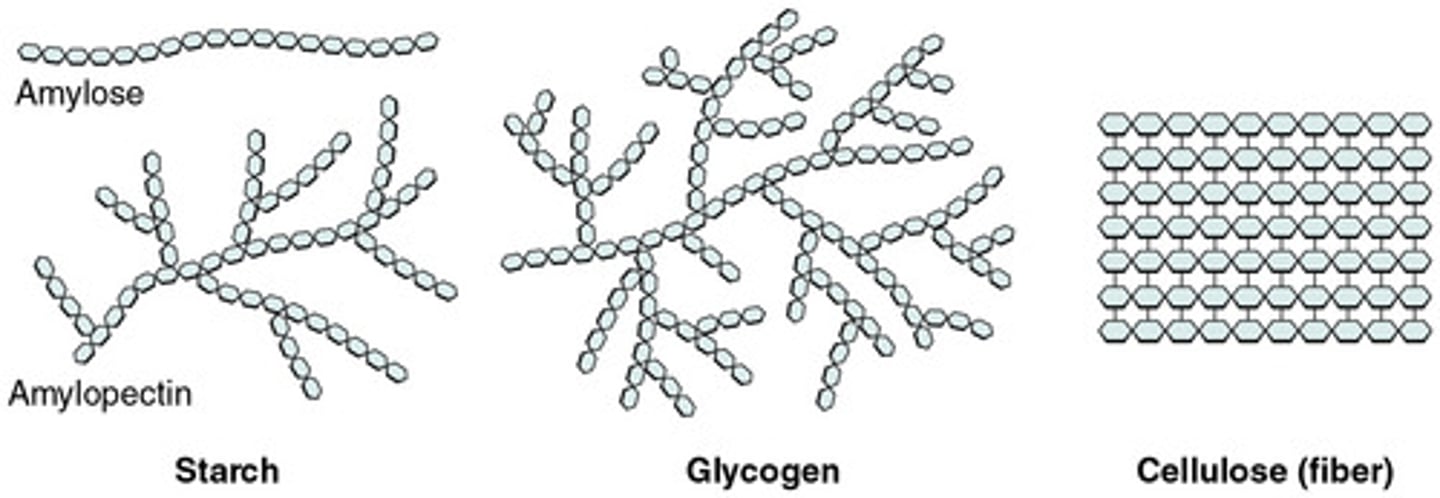
Identify amylopectin from molecular drawings.
Skill: Identification of biochemical such as sugars, lipids, or amino acids from molecular drawings.
Amylopectin is a polymer of apha-glucose with some branch points.
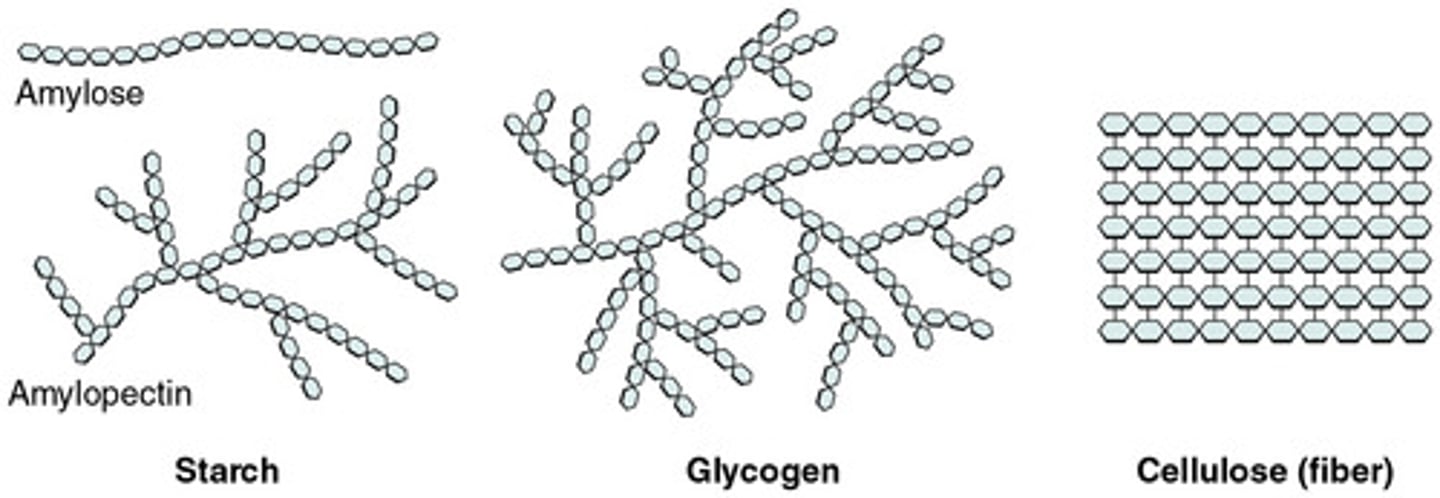
Define vitalism.
Nature of Science: Falsification of theories- the artificial synthesis of urea helped to falsify vitalism.
Vitalism is a (non-scientific) idea that living organisms contain a "life force" or "energy" that give the properties of life separate from physical and chemical laws.
Explain the role of urea in the falsification of vitalism.
Nature of Science: Falsification of theories- the artificial synthesis of urea helped to falsify vitalism.
Up until about the 1830s, people thought that organic molecules of life could not be synthesis without the vital "life force" thought to be found in living things.
However, French chemist Wohler synthesized the organic molecule urea from inorganic components, showing that a vital "life force" was not needed.